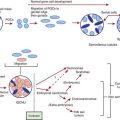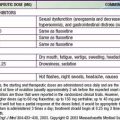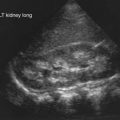Chapter 518 Transient Proteinuria
The majority of children found to have positive urinary dipstick values for protein have normal dipstick values on repeated measurements. Approximately 10% of children who undergo random urinalysis have proteinuria by a single dipstick measurement. Across the school-age spectrum this finding occurs more commonly in adolescents than in younger children. In most cases, serial testing of the patient’s urine demonstrates resolution of the abnormality. This phenomenon defines transient proteinuria, and its cause remains elusive. Defined contributing factors include a temperature >38.3°C (101°F) (Chapter 169), exercise (Chapter 678), dehydration, cold exposure, heart failure, seizures, or stress. The proteinuria usually does not exceed 1-2+ on the dipstick. No evaluation or therapy is needed for children with this benign condition. Persistence of proteinuria, even if low grade, suggests the need for additional evaluation.







